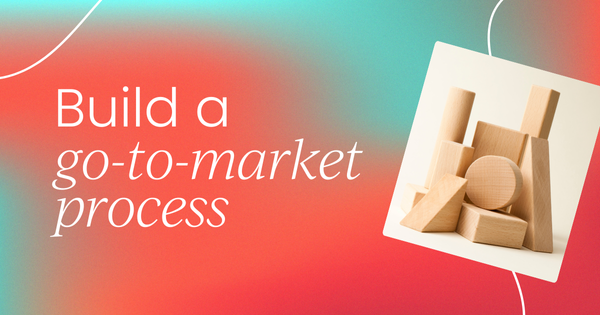
There’s been much said about how to build a go-to-market plan; with a quick Google search, you can find a myriad of frameworks that help product managers, product marketers, CEOs, and CMOs ensure their new product is launched with the highest likelihood of success.
To be clear, we at Fluvio ascribe to and support this micro-level strategy (product-level) for our clients, but where we think most companies fail resides in their macro-level ability to sustain successful product and feature launches.
Over the course of several years and dozens of engagements, we have mapped out what we believe to be the most effective, repeatable go-to-market process that any company can and should adopt – the Fluvio GTM Model.
The inbound
There are eight inbound initiatives companies need to build and install within their organization to support an effective outbound go-to-market motion. In an ideal world, these are built before any outbound activity begins; thus, treat these as the foundation upon which to build sales and marketing (outbound) activity.
In reality, most companies neglect to install this foundational inbound motion (or at least parts of it) before bringing their company or product(s) to market. And while it is not ideal, it is possible to step back and retroactively implement these initiatives.
Further, as with real-world foundational infrastructure, these should be reviewed and refreshed on a regular basis as products and the market evolve.
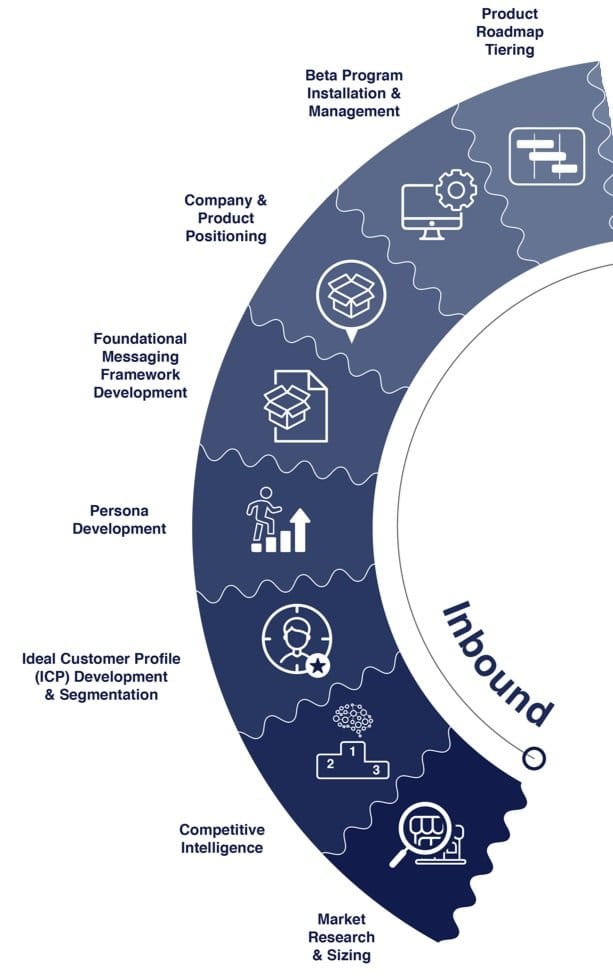
Market research, sizing, and competitive intelligence
The first two inbound initiatives focus on defining and thoroughly understanding the dynamics and size of the market and ecosystem your product(s) sit within, and the key players you will cross paths with.
Ultimately, the goal is to map out the category landscape, trends, and opportunity areas to hone in on when planning your go-to-market strategy.
Ideal customer profile and persona development
Building upon the market and competitive landscape initiatives, the next inbound initiatives include ideal customer profile (ICP) development (defining the qualities that make a company the best fit for the solutions you provide) and defining personas; the various individuals that will be involved in buying and/or using your product (gatekeepers, decision-makers, influencers, blockers, etc.).
While there are a handful of mechanisms for capturing the qualitative and quantitative inputs for developing ICPs and personas, nothing beats getting directly in front of your customers to capture their voice (via interviews and surveys).
We have partnered with Fluvio to provide extensive B2B and B2C product marketing expertise for software and technology companies looking to find product-market fit and deliver sustainable growth.
Together, we can offer a suite of products and services to help you scale more effectively and efficiently throughout each stage of your lifecycle.
Messaging and positioning
Once you’ve established your market opportunity, the competitive landscape, and have defined your ICP and personas you have the context to begin to flesh out your messaging and positioning.
These initiatives synthesize research into tangible insights that help identify the key points of differentiation for your company and product(s), align them with market trends and the needs and desires of your ICP and personas, and formulate external messaging that will resonate with your discrete audiences.
Beta program installation and roadmap tiering
The bulk of the inbound motion is now complete, but there are several initiatives that most companies fail to put in place that are critical to fuzing the inbound and outbound motions together.
First, you must install an effective, repeatable beta process. While many would consider this a technical necessity (identifying and fixing any bugs), they are failing to recognize the customer impact (and potential roadmap inputs) of beta programs.
Beyond testing technical product requirements, betas should be used to ensure you are building solutions purpose-built for your ICP and personas.
Therefore, you must ensure you have the right audience recruited into the program, in addition to the proper mechanisms in place to communicate with your participants, run multiple betas at once, and measure exit criteria (note, ensure you clarify risks and your requirements with beta customers upfront and capture NPS, CSAT, etc.).
When products are ready for general availability (GA), you’ll want to ensure you have a programmatic method of determining the level of go-to-market support that will be required to bring the product to market.
Generally, this means identifying characteristics that can be used to segment product launches into tiering (i.e. tier-1 = core differentiator, high-impact GTM; tier-2 = important to customers and prospects, requires at least minimal education beyond initial awareness, and so forth).
Securing alignment in your PMM function may be straightforward, but ensuring that this approach to GTM tiering (and effort) for every launch has cross-functional buy-in is critical.
When you assure that functions critical to GTM such as Product, Sales, Customer Success, and others are aligned to your tiering and GTM approach, the likelihood of successful launches is greatly increased.
The outbound
And now we’ve made it to the outbound motion of a successful go-to-market process. In this motion, companies package up what is produced in the inbound motion and inject it in-market.
I’m purposeful in using ‘inject’; you want to be sure you are conscientious, and precise with what audiences you are targeting, when, and with what message. We aren’t ‘blasting’ products to market.
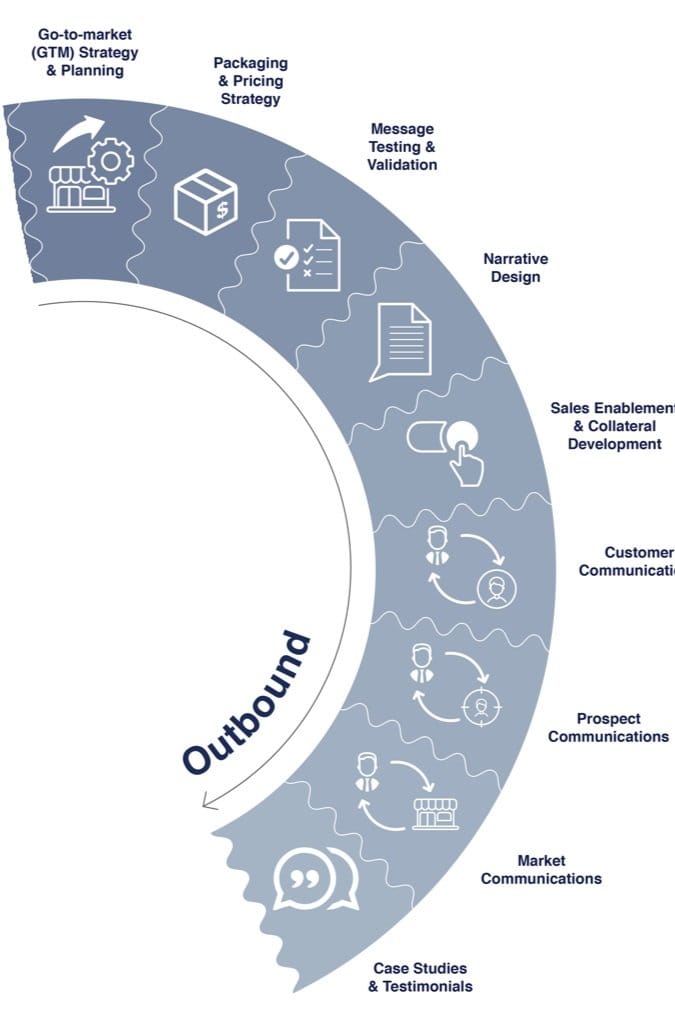
Go-to-market planning, packaging, and pricing strategy
As CEO of Ignition, Derek Osgood notes,
“If your team believes a go-to-market (GTM) strategy is just positioning your product for launch, that’s like saying a sandwich is just two pieces of bread with some stuff in the middle.”
The product marketer’s go-to-market strategy document is akin to product management’s product requirements document (PRD). Yes, it packages up all of the insights, positioning, and messaging from the inbound motion, but it does much more than just that.
It’s a canvas to illustrate and articulate:
- What is launching (both its current and future states),
- The market and ecosystem it operates in,
- Who it is built for (ICP and personas),
- The problems these companies and people are facing,
- The explicit value the product will bring and the messaging that will be used for each segment and persona,
- The commercialization model (price, product packaging/bundle, sales-led, product-led, etc.),
- The tactical activation plans (channels and timing),
- How success will be defined and measured (KPIs), and
- Risks, limitations & adoption blockers.
If it’s not obvious, there is a lot of time, effort, and thought that goes into building a go-to-market strategy, and doing so will require close alignment and collaboration with a number of stakeholders.
For that reason, organizations must templatize the structure of these strategy documents and install mechanisms for teams to stay connected to ensure the go-to-market process has longevity.
Message testing and narrative design
Post-strategy alignment, teams must change their mindset and begin to move quickly with intention. Go-to-market teams must have a bias for action, period. Start testing out different versions of your messaging.
Develop specific goals, design an approach (qualitative/quantitative, emails, interviews, A/B testing onsite, etc.), and measure results.
Ultimately, the goal is to validate pain points, benefits, and propensity to buy as well as test specific messaging for clarity, comprehensiveness, and value.
The data from these tests will give you confidence in how you will connect with your audience and should give you the foundation to develop your product’s narrative. Using narrative design will give you an edge, even in the most crowded categories.
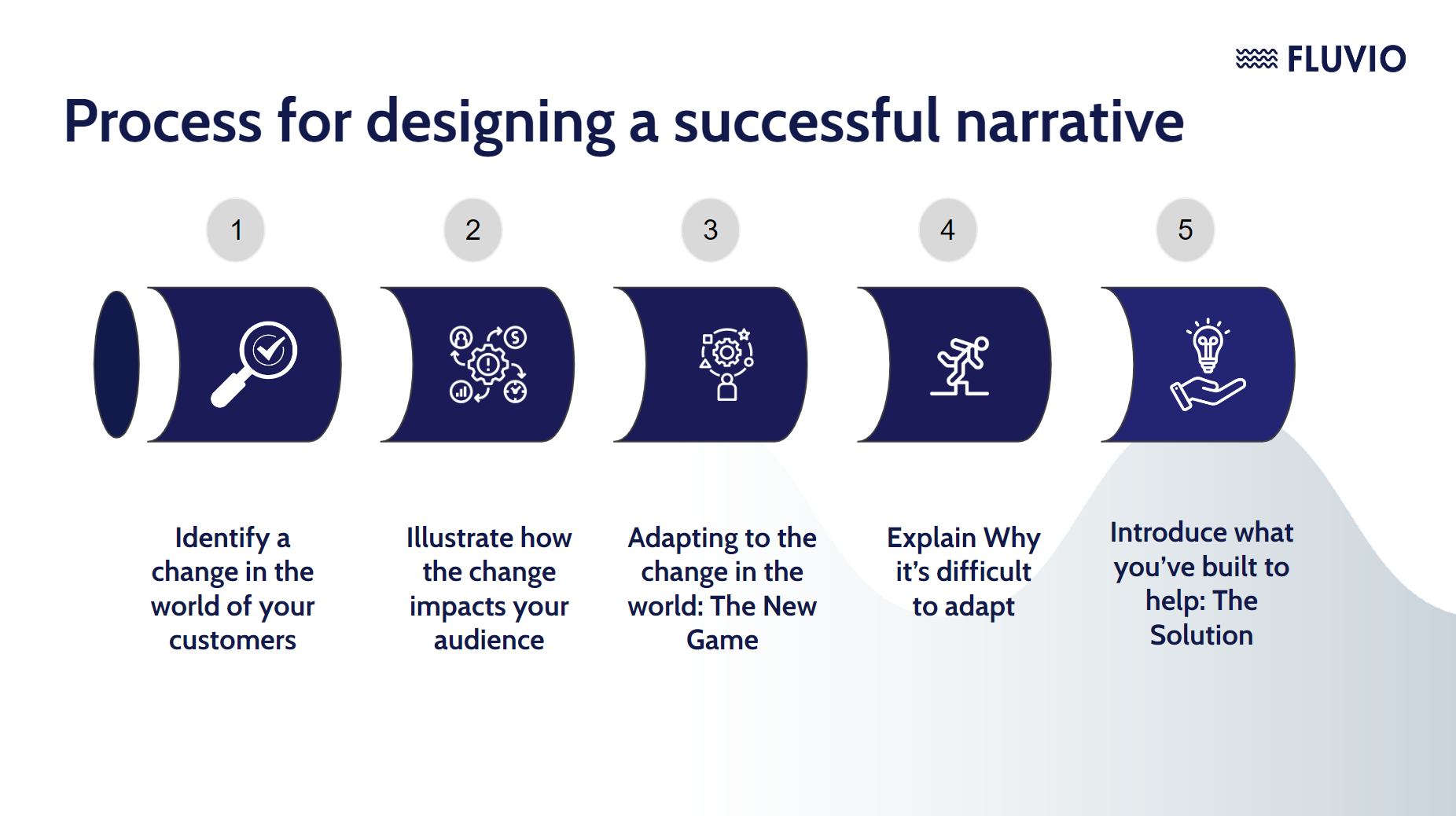
Essentially, narrative design helps your brand/product stand out and be original, builds a new reality in the mind of your target audience, and sells over time. An important call out here – narratives can and should evolve over time!
Sales enablement, audience communication, and case studies
We’ve now made it into the more tactical initiatives within the outbound motion. This is also when building trusted relationships with sales folks becomes critical.
Product marketing teams are always being asked to create materials for salespeople. To be efficient, product marketers should keep the following clarifying questions in mind as they work through the collateral creation process:
- Will this material be used internally or externally? (does it need to be designed?)
- Will the collateral needed address a question that we’ve heard directly – and often – from clients?
- Can we repurpose existing content to serve our needs?
- What audience will the materials cater to? (will they be segmented or for GA?)
- What is the best way to reach that audience? (through the sales team? Digitally? Both?)
Once the right approach has been identified, product marketers must have a prescriptive process in place to create and maintain sales collateral. We recommend the following five-step process.

Along with sales enablement and collateral development, external comms must be developed and executed. Oftentimes, this means working with channel experts within the marketing organization to breathe life into the messaging work laid out in the go-to-market plan and narrative.
Align on the appropriate channels for customers, prospects, and the market more broadly (emails, in-app messages, press releases, events, blog posts, etc.) and optimize each while they are in flight to ensure you are constantly pushing toward your KPIs.
The level of effort you aligned on earlier, when establishing launch tiers, should serve you well here in reducing one-off work evaluating channels for every launch.
Once some customers have had an opportunity to use and find value in your product, case study opportunities should be identified and cultivated, oftentimes via customer success teams. Case studies and testimonials demonstrate viability and build trust with prospects.
The accelerator (crank)
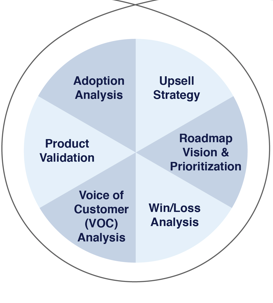
While most think of a go-to-market process as linear, it most certainly is not – it’s cyclical. There are six initiatives that when effectively put in place and into action, will help accelerate your go-to-market process.
This accelerator motion includes adoption analysis, product validation, upsell strategy, voice of customer (VoC), win/loss analysis, and roadmap vision & prioritization. Much like the entire go-to-market process, all of these initiatives involve data aggregation and analysis.
However, the insights gleaned from the accelerator motion are unique in that you will be working off of real-time, actualized data (from a live product in customers’ hands). React quickly, form hypotheses, and make incremental adjustments to your inbound motion.
The final GTM model
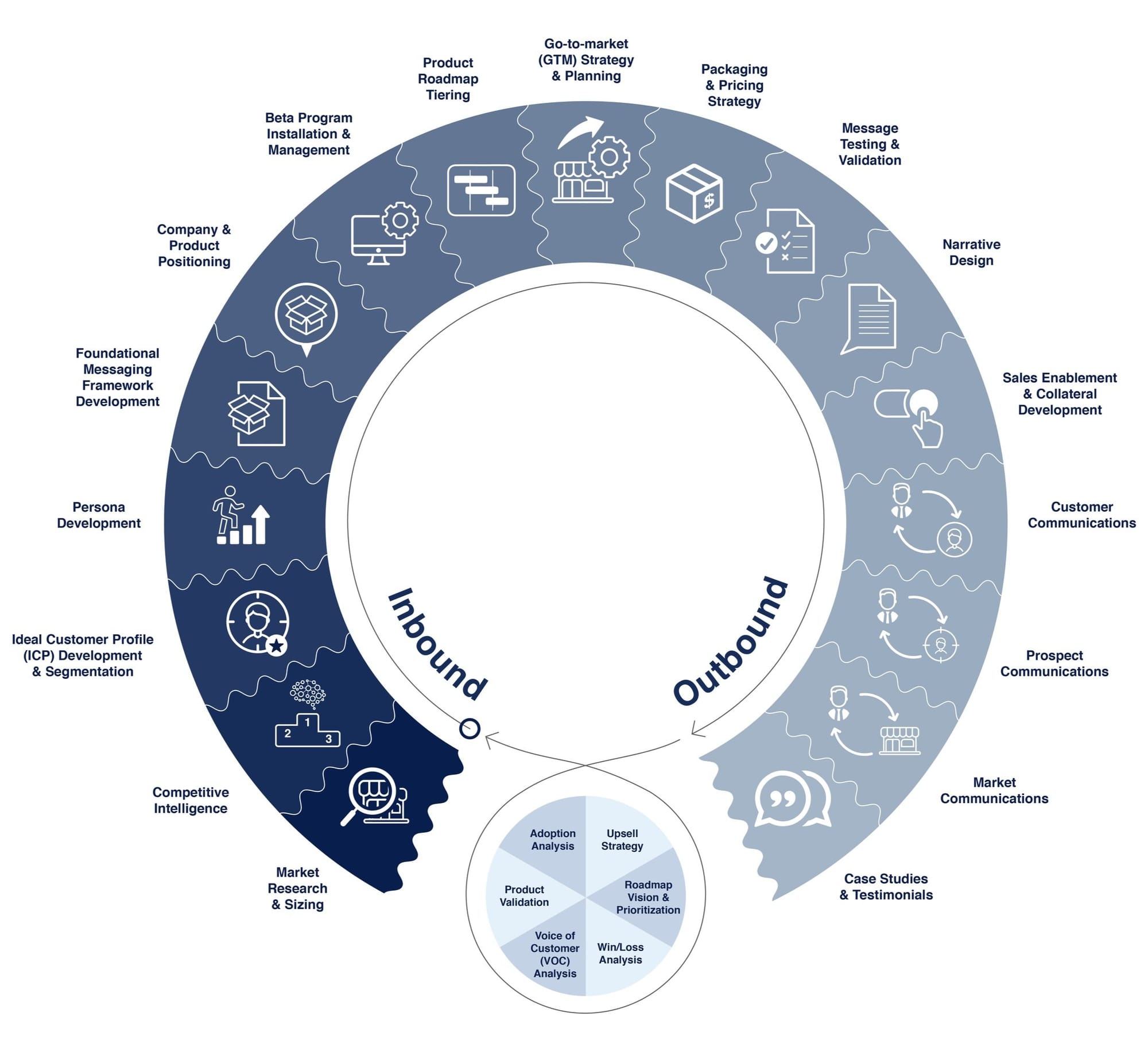
We believe, and our client work has validated, that the Fluvio GTM Model is the most effective, repeatable go-to-market process, enabling companies to sustain successful product and feature launches over time.
Once built and implemented, companies must invest in key personnel and resources to manage the end-to-end process and ongoing audits and refreshes should be planned on a regular basis (e.g. annually).
